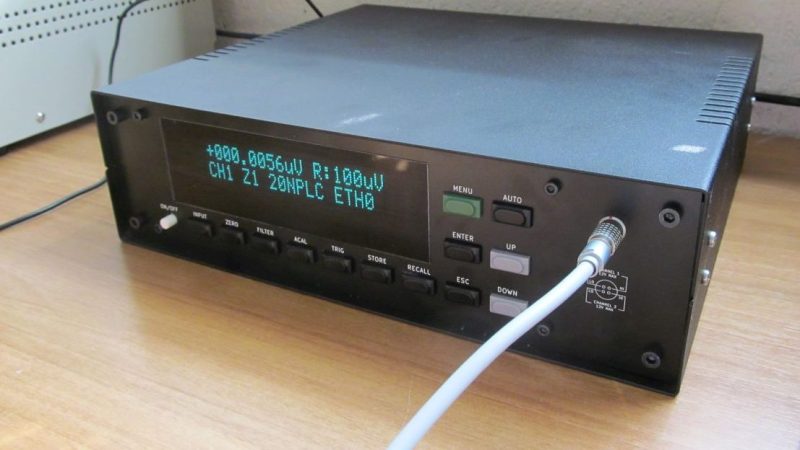Nanovolt Meter Requires Careful Design For Accuracy’s Sake

Measuring voltages is fairly straightforward most of the time. Simply grab any old cheap multimeter, hook up the probes, and read off the answer. If, however, you need to measure very tiny voltages, the problem gets more complex. [Jaromir-Sukuba] designed a nanovoltmeter specifically to deal with this difficult case.
The nanovoltmeter is exactly what it sounds like: a voltmeter that is sensitive and stable enough to measure and report voltages on the scale of nanovolts. Having a tool that can do this reliably can be very useful when it comes to measuring very small resistances or working with ever-so-slight differential voltages.
The design of such an instrument is quite involved in order to reduce sources of noise and instability. The analog-to-digital converters must be of high quality, and they must be powered with their own supply to avoid excess noise. There are low-noise amplifiers and all manner of specialised subsystems required to handle the task. There’s even a 3D-printed cover to prevent airflow over a voltage reference in order to reduce noise from thermal variance.
Nonetheless, [Jaromir-Sukuba] does a great job of exploring what’s required to build a nanovoltmeter, and explains it well for an audience new to the field of such precise measurements. The resulting instrument was also capable of measurements with less than 25 nanovolts of noise peak-to-peak. It’s a great feat and those wishing to learn about how it’s done have an excellent resource to learn how.
We’ve seen other tricky measurement devices before, too. Did you know you probably already have a usable nano-ammeter? Now you do!
[Thanks to David Gustafik for the tip!]
Post a Comment